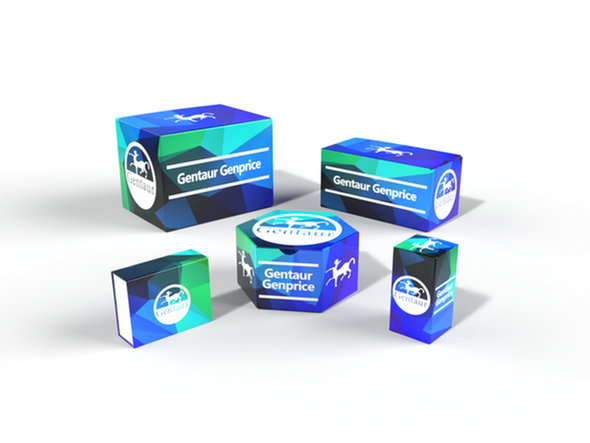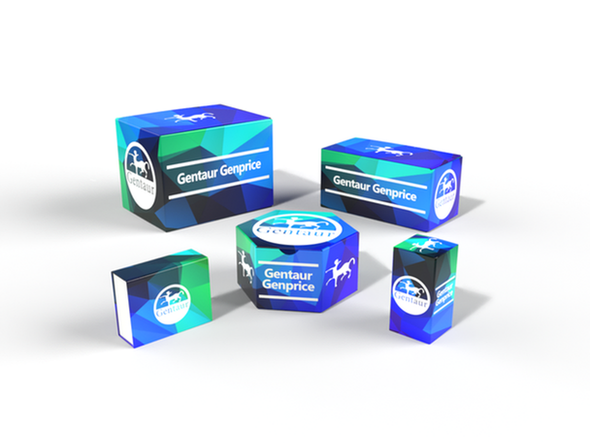Description
CD68 Antibody [SPM130] | 34-191 | Gentaur UK, US & Europe Distribution
Host: Mouse
Reactivity: Human, Monkey, Rabbit, Cat
Homology: N/A
Immunogen: A human alveolar macrophage subcellular fraction was used as the immunogen for this anti-CD68 antibody.
Research Area: Immunology
Tested Application: Flow, IF, IHC
Application: Flow Cytometry: 0.5-1 ug/million cells in 0.1ml
Immunofluorescence: 0.5-1 ug/ml
Immunohistochemistry (FFPE) : 0.25-0.5 ug/ml for 30 min at RT (1)
Prediluted format: incubate for 30 min at RT (2)
The optimal dilution of the anti-CD68 antibody for each application should be determined by the researcher.
1. Staining of formalin-fixed tissues is enhanced by boiling tissue sections in 10mM Citrate Buffer, pH 6.0, for 10-20 min followed by cooling at RT for 20 minutes.
2. The prediluted format is supplied in a dropper bottle and is optimized for use in IHC. After epitope retrieval step (if required) , drip mAb solution onto the tissue section and incubate at RT for 30 min.
Specificiy: Does not react with Pig, Dog, Chicken
Positive Control 1: N/A
Positive Control 2: N/A
Positive Control 3: N/A
Positive Control 4: N/A
Positive Control 5: N/A
Positive Control 6: N/A
Molecular Weight: N/A
Validation: N/A
Isoform: N/A
Purification: Protein G affinity chromatography
Clonality: Monoclonal
Clone: SPM130
Isotype: IgG1, kappa
Conjugate: Unconjugated
Physical State: Liquid
Buffer: PBS with 0.1 mg/ml BSA and 0.05% sodium azide
Concentration: 0.2 mg/mL
Storage Condition: Aliquot and Store at 2-8˚C. Avoid freez-thaw cycles.
Alternate Name: Macrosialin, Gp110, CD68, CD68
User Note: Optimal dilutions for each application to be determined by the researcher
BACKGROUND: This antibody recognizes a glycoprotein of 110kDa, which is identified as CD68. It is important for identifying macrophages in tissue sections. It stains macrophages in a wide variety of human tissues, including Kupffer cells and macrophages in the red pulp of the spleen, in lamina propria of the gut, in lung alveoli, and in bone marrow. It reacts with myeloid precursors and peripheral blood granulocytes. It also reacts with plasmacytoid T cells, which are supposed to be of monocyte/macrophage origin. It shows strong granular cytoplasmic staining of chronic and acute myeloid leukemia and also reacts with rare cases of true histiocytic neoplasia. Lymphomas are negative or show few granules.

![CD68 Antibody [SPM130] CD68 Antibody [SPM130]](https://cdn11.bigcommerce.com/s-1rdwiq712m/images/stencil/608x608/products/484381/490210/gentaur-genprice__26005.1661610467__29809.1661628092__75433.1661676199__77988.1661684280__64362.1661692443__02085.1662049603__45075.1662119302__91744.1662191540__21580.1662291419__68772.1663498861.png?c=1)




